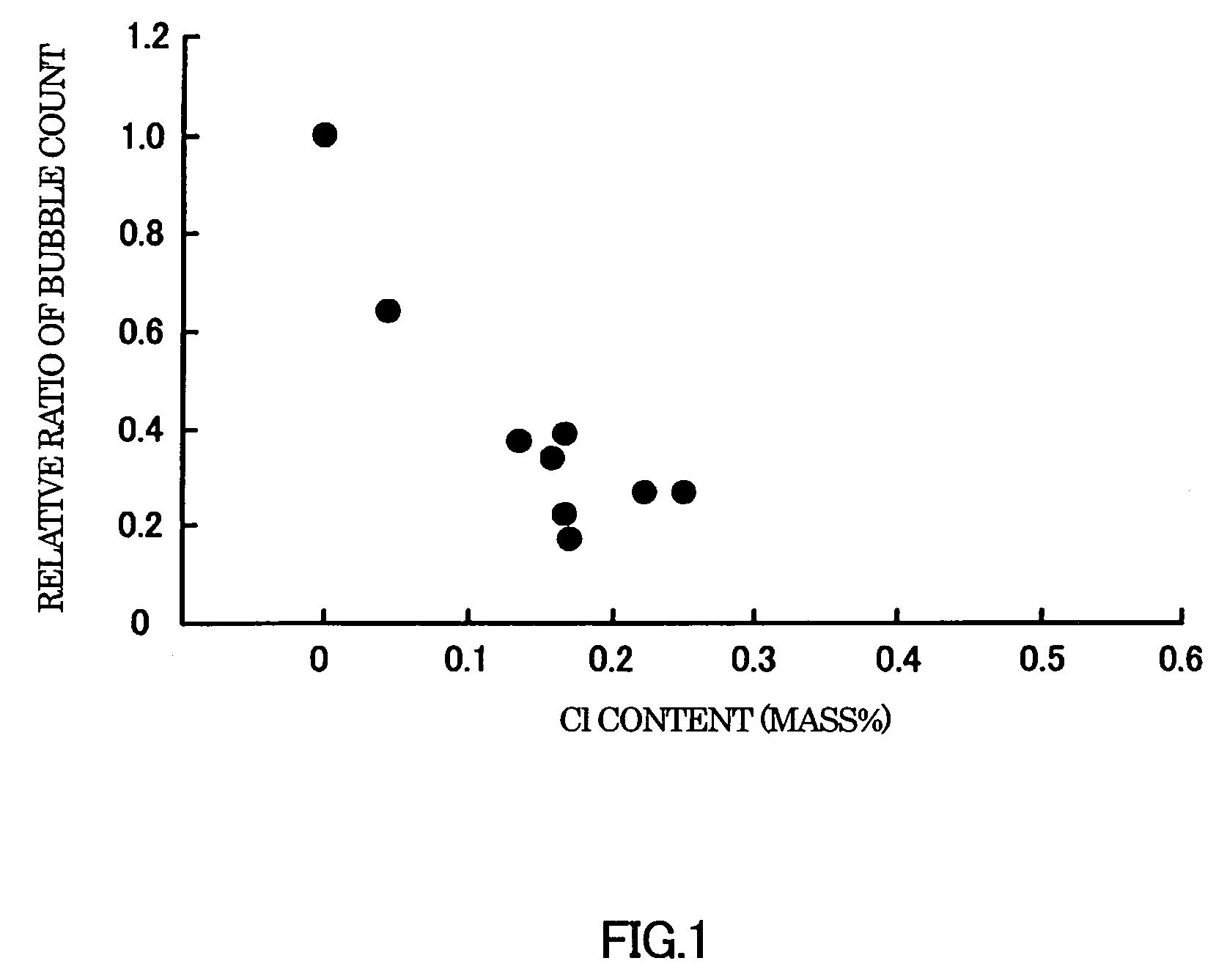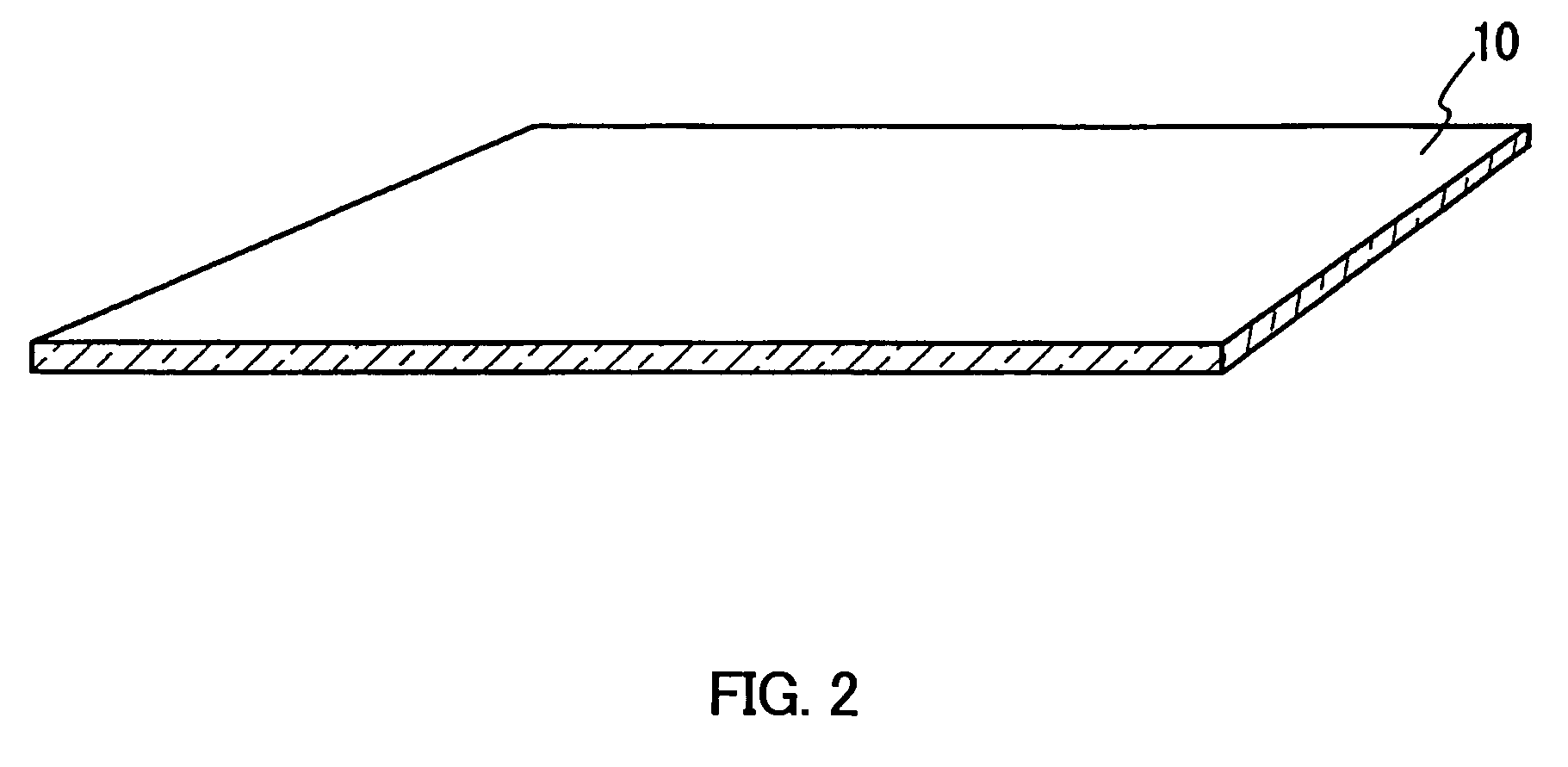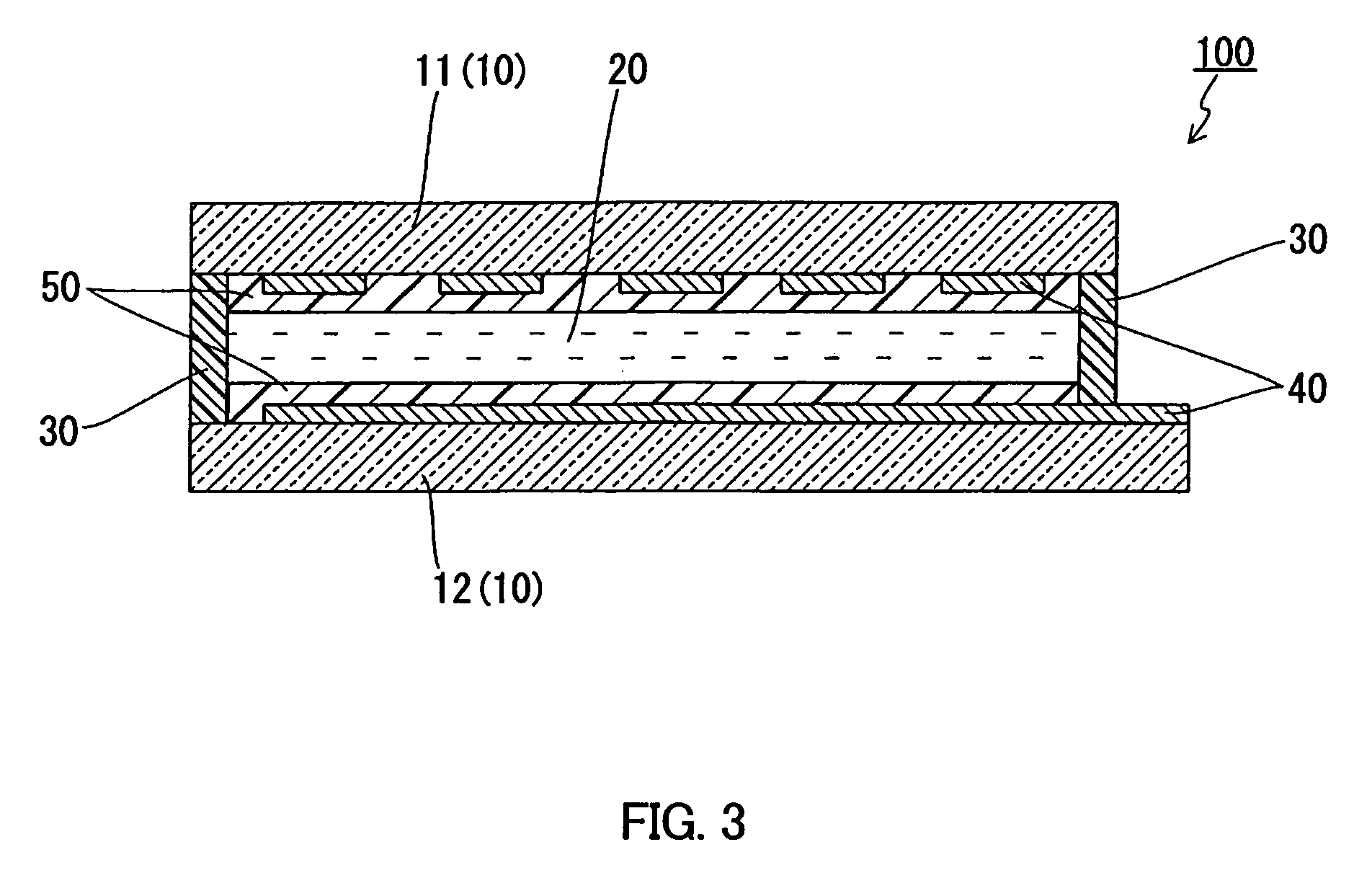Glass composition
a technology of glass and composition, applied in the field of glass composition, can solve problems such as adverse effects on other members, and achieve the effects of improving the glass fining effect, facilitating the production of glass substrates for large information display devices, and sufficient fining
- Summary
- Abstract
- Description
- Claims
- Application Information
AI Technical Summary
Benefits of technology
Problems solved by technology
Method used
Image
Examples
examples 1 to 58
, COMPARATIVE EXAMPLES 1 TO 11
[0058]Batches of raw glass materials (may be referred to as “batches” hereinafter) were prepared to have the compositions shown in Tables 1 to 7. As common raw glass materials, silica (silicon oxide), boric anhydride, alumina, basic magnesium carbonate, calcium carbonate, strontium carbonate, barium carbonate, lithium carbonate, sodium carbonate, and potassium carbonate were used. As Cl sources, lithium chloride, sodium chloride, potassium chloride, and calcium chloride were used.
[0059]Each batch was melted and fined in a platinum crucible. The crucible was placed in an electric furnace that had been set at 1600° C., and maintained therein for 4 hours in Examples 1 to 44 and Comparative Examples 1 to 8, and 16 hours in Examples 45 to 58 to melt the batch. The crucible with the glass melt was taken out of the furnace and allowed to cool and solidify at room temperature. As a result, a glass body was obtained. The glass body was taken out of the crucible ...
PUM
| Property | Measurement | Unit |
|---|---|---|
| temperature | aaaaa | aaaaa |
| boiling point | aaaaa | aaaaa |
| boiling point | aaaaa | aaaaa |
Abstract
Description
Claims
Application Information
 Login to View More
Login to View More - R&D
- Intellectual Property
- Life Sciences
- Materials
- Tech Scout
- Unparalleled Data Quality
- Higher Quality Content
- 60% Fewer Hallucinations
Browse by: Latest US Patents, China's latest patents, Technical Efficacy Thesaurus, Application Domain, Technology Topic, Popular Technical Reports.
© 2025 PatSnap. All rights reserved.Legal|Privacy policy|Modern Slavery Act Transparency Statement|Sitemap|About US| Contact US: help@patsnap.com



